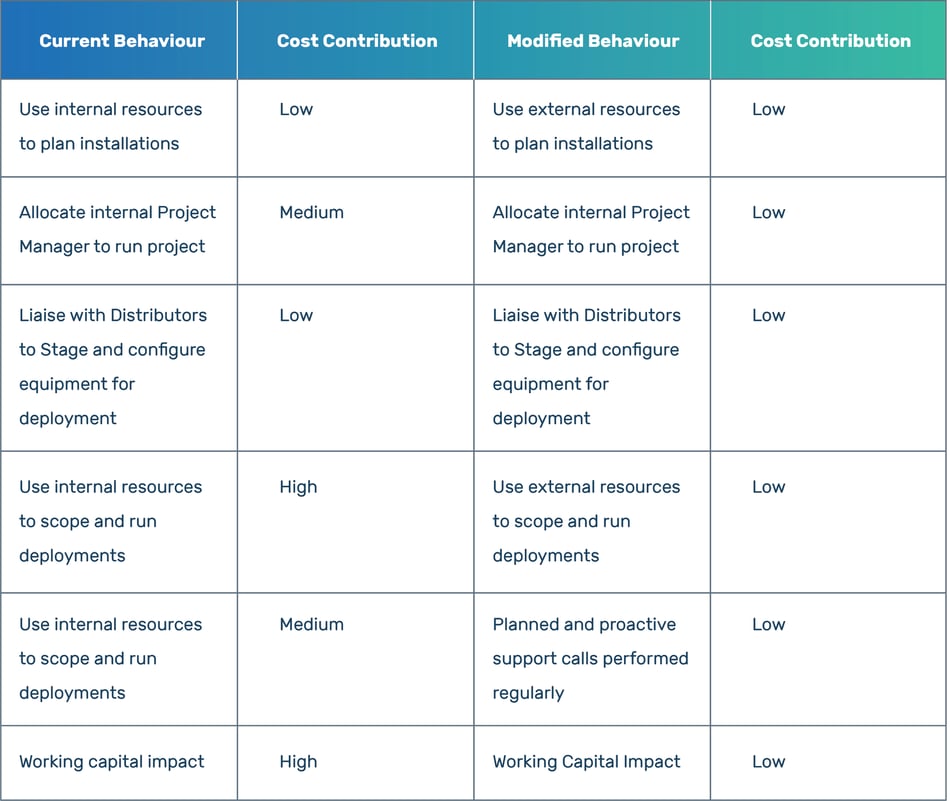How to Make IT Support Services a Profit Centre
By
John McVicker
Running a technology Channel Partner organisation is tough. Juggling the perpetual need to retain and, hopefully, secure new customers against the needs of keeping the team motivated, bills paid all whilst making a profit. And each year, approximately 20% of all Channel organisations give up the struggle and do something else as the struggle to survive gives way to the need to actually make a profit. Otherwise, what is the point?
Making a profit in a Channel organisation is not an easy thing, with many small ways that precious-earned cash can leak away and ultimately undermine the viability of the business. None is more easy to lose money on, than installation and support services. It is this often-overlooked facet of the Channel business that causes the most headaches, wasted time, disrupted customer satisfaction and lost margin that can contribute to business failure, and yet to fix the issue is not so tough.
It is worth noting, that whilst no two Channel Partners are necessarily the same, there common threads to the DNA of each partner that cannot be ignored – the desire for control, delivering against expectations, invoicing and growing margins, the hunt for the next deal and the relentless drive to win.
To consider IT support and installation services as a potential profit centre, seems far-fetched but a few simple changes to the way in which the business operates, can change this function into a real source of revenue and profitability to make the entire process self-funded effectively, rather than being assumed as part of a cost of sale.
Here we examine the current behaviour and its contribution to solution cost and compare it to a modified behaviour that turns that cost centre into a profit centre, yet still delivers the same service and outcome to the customer – same output, a different path to getting there.
Turning IT Support field services from a cost to a profit centre

Whilst we can see that there are 2 different cost contribution models, it is also worth noting that the project itself comes with a certain operational mentality. When Channel Partners do the work themselves, there is often a temptation to have the project done as fast as possible (which is entirely logical) using internally available resources. Yet, this approach fails to take account of not only their likely apportioned cost to that project, but also fails to take account of the opportunity cost of that resource. The cost of having that resource on a relatively low-value deployment, when that same resource could be working on higher value, higher profitability work that will make an improvement to the bottom line.
This whole-of business viewpoint can sometimes be missing in the installation process and can often affect profitability (or loss) of that project. And yet delivering the same outcome can be achieved, using largely similar techniques, but through partnership with a specialist provider – the same commercial argument that the industry has often adopted as it sells Managed Services to its customers – as a means to provide service, predictability, control, customer satisfaction and tight control on costs and overheads.
Evidence shows that an increasing number of Channel Partners, faced with continued pressure to grow and build, are increasingly turning to specialist IT Installation and support providers to deliver that outcome to their customers, whilst driving that facet of the service to deliver profits rather than being a drain on costs and working capital.
Often these working capital constraints have an adverse impact on the business, and yet a few simple changes to the approach around delivering services, can preserve this precious capital, improve the chances of profitability and maintain the delivery of client excellence. There are several actions that can be taken to maximise working capital and deliver improved profitability from installation and support services. Namely:
-
Partner with a specialist installation and IT support provider – recognise that installation and support services require expertise, that are unlikely to be in-house
-
Use that specialist to plan and project managed service installation, as part of the overall solutions architecture – planning and optimising timings, and costs associated with installations is something that Channel Partners should use a specialist to help them –partner for profit
-
Secure cost certainties from the specialist partner, and add a margin to that cost, in order to guarantee margin contribution – this is just a smart way of having complete service visibility
-
Let them suggest ways of modifying the service installation to your benefit, and that of your customer – be open to new ways of scaling through smart input to make everything work generally better
-
Get them to include and schedule regular on-site support calls to proactively monitor the service – being proactive and available can make a massive difference to the customer satisfaction, profits and growth
-
Let them help you uncover the next logical opportunity – often when they are doing the installation, opportunities present themselves and these can, in turn, become significant cross-sell opportunities into that customer again
It isn’t hard to see that making a few minor changes to the internal mindset, coupled with making a few changes to the operational interactions, can have a positive and predictable impact on the bottom line. Removing the need to do everything in-house, enables Channel Partners to focus on their core competence around customer wins, retention and overall service delivery, and through partnership with a specialist provider, enables them to partner for profitability.
The complexities of service delivery, installation and support are well documented and there are many pitfalls that can ultimately turn even the most profitable project into a loss-making endeavour. Taking a few small actions, and recognising the maintaining control, is not the same as having all of the delivery resources in-house, can ensure this area of the business becomes a profit centre, maximises the use of working capital and does not become a huge cost burden that ultimately drags the business back.
Looking to understand more, get in touch with us here or here.


